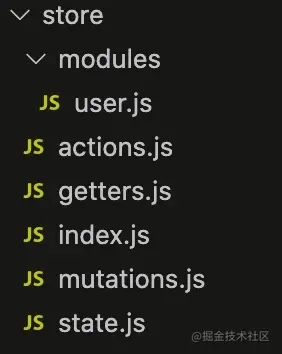| 下面把每一种组件通信方式的写法一一列出
1. props父组件向子组件传送数据,这应该是最常用的方式了
子组件接收到数据之后,不能直接修改父组件的数据。会报错,所以当父组件重新渲染时,数据会被覆盖。如果子组件内要修改的话推荐使用 computed
// Parent.vue 传送<template> <child :msg="msg"></child></template>// Child.vue 接收export default { // 写法一 用数组接收 props:['msg'], // 写法二 用对象接收,可以限定接收的数据类型、设置默认值、验证等 props:{ msg:{ type:String, default:'这是默认数据' } }, mounted(){ console.log(this.msg) },}
2. .sync可以帮我们实现父组件向子组件传递的数据 的双向绑定,所以子组件接收到数据后可以直接修改,并且会同时修改父组件的数据
// Parent.vue<template> <child :page.sync="page"></child></template><script>export default { data(){ return { page:1 } }}// Child.vueexport default { props:["page"], computed(){ // 当我们在子组件里修改 currentPage 时,父组件的 page 也会随之改变 currentPage { get(){ return this.page }, set(newVal){ this.$emit("update:page", newVal) } } }}</script>
3. v-model和 .sync 类似,可以实现将父组件传给子组件的数据为双向绑定,子组件通过 $emit 修改父组件的数据
// Parent.vue<template> <child v-model="value"></child></template><script>export default { data(){ return { value:1 } }}// Child.vue<template> <input :value="value" @input="handlerChange"></template>export default { props:["value"], // 可以修改事件名,默认为 input model:{ event:"updateValue" }, methods:{ handlerChange(e){ this.$emit("input", e.target.value) // 如果有上面的重命名就是这样 this.$emit("updateValue", e.target.value) } }}</script>
4. refref 如果在普通的DOM元素上,引用指向的就是该DOM元素;
如果在子组件上,引用的指向就是子组件实例,然后父组件就可以通过 ref 主动获取子组件的属性或者调用子组件的方法
// Child.vueexport default { data(){ return { name:"沐华" } }, methods:{ someMethod(msg){ console.log(msg) } }}// Parent.vue<template> <child ref="child"></child></template><script>export default { mounted(){ const child = this.$refs.child console.log(child.name) // 沐华 child.someMethod("调用了子组件的方法") }}</script>
5. $emit / v-on子组件通过派发事件的方式给父组件数据,或者触发父组件更新等操作
// Child.vue 派发export default { data(){ return { msg: "这是发给父组件的信息" } }, methods: { handleClick(){ this.$emit("sendMsg",this.msg) } },}// Parent.vue 响应<template> <child v-on:sendMsg="getChildMsg"></child> // 或 简写 <child @sendMsg="getChildMsg"></child></template>export default { methods:{ getChildMsg(msg){ console.log(msg) // 这是父组件接收到的消息 } }}
6. $attrs / $listeners多层嵌套组件传递数据时,如果只是传递数据,而不做中间处理的话就可以用这个,比如父组件向孙子组件传递数据时
$attrs:包含父作用域里除 class 和 style 除外的非 props 属性集合。通过 this.$attrs 获取父作用域中所有符合条件的属性集合,然后还要继续传给子组件内部的其他组件,就可以通过 v-bind="$attrs" $listeners:包含父作用域里 .native 除外的监听事件集合。如果还要继续传给子组件内部的其他组件,就可以通过 v-on="$linteners"
使用方式是相同的
// Parent.vue<template> <child :name="name" title="1111" ></child></templateexport default{ data(){ return { name:"沐华" } }}// Child.vue<template> // 继续传给孙子组件 <sun-child v-bind="$attrs"></sun-child></template>export default{ props:["name"], // 这里可以接收,也可以不接收 mounted(){ // 如果props接收了name 就是 { title:1111 },否则就是{ name:"沐华", title:1111 } console.log(this.$attrs) }}
7. $children / $parent$children:获取到一个包含所有子组件(不包含孙子组件)的 VueComponent 对象数组,可以直接拿到子组件中所有数据和方法等
$parent:获取到一个父节点的 VueComponent 对象,同样包含父节点中所有数据和方法等
// Parent.vueexport default{ mounted(){ this.$children[0].someMethod() // 调用第一个子组件的方法 this.$children[0].name // 获取第一个子组件中的属性 }}// Child.vueexport default{ mounted(){ this.$parent.someMethod() // 调用父组件的方法 this.$parent.name // 获取父组件中的属性 }}
8. provide / injectprovide / inject 为依赖注入,说是不推荐直接用于应用程序代码中,但是在一些插件或组件库里却是被常用,所以我觉得用也没啥,还挺好用的
provide:可以让我们指定想要提供给后代组件的数据或方法
inject:在任何后代组件中接收想要添加在这个组件上的数据或方法,不管组件嵌套多深都可以直接拿来用
要注意的是 provide 和 inject 传递的数据不是响应式的,也就是说用 inject 接收来数据后,provide 里的数据改变了,后代组件中的数据不会改变,除非传入的就是一个可监听的对象
所以建议还是传递一些常量或者方法
// 父组件export default{ // 方法一 不能获取 methods 中的方法 provide:{ name:"沐华", age: this.data中的属性 }, // 方法二 不能获取 data 中的属性 provide(){ return { name:"沐华", someMethod:this.someMethod // methods 中的方法 } }, methods:{ someMethod(){ console.log("这是注入的方法") } }}// 后代组件export default{ inject:["name","someMethod"], mounted(){ console.log(this.name) this.someMethod() }}
9. EventBusEventBus 是中央事件总线,不管是父子组件,兄弟组件,跨层级组件等都可以使用它完成通信操作
定义方式有三种
/方法一:
// 抽离成一个单独的 js 文件 Bus.js ,然后在需要的地方引入// Bus.jsimport Vue from "vue"export default new Vue() 方法二 :直接挂载到全局
// main.jsimport Vue from "vue"Vue.prototype.$bus = new Vue() 方法三 :注入到 Vue 根对象上
// main.jsimport Vue from "vue"new Vue({ el:"#app", data:{ Bus: new Vue() }})使用如下,以方法一按需引入为例
// 在需要向外部发送自定义事件的组件内<template> <button @click="handlerClick">按钮</button></template>import Bus from "./Bus.js"export default{ methods:{ handlerClick(){ // 自定义事件名 sendMsg Bus.$emit("sendMsg", "这是要向外部发送的数据") } }}// 在需要接收外部事件的组件内import Bus from "./Bus.js"export default{ mounted(){ // 监听事件的触发 Bus.$on("sendMsg", data => { console.log("这是接收到的数据:", data) }) }, beforeDestroy(){ // 取消监听 Bus.$off("sendMsg") }}
10. VuexVuex 是状态管理器,集中式存储管理所有组件的状态。这一块内容过长,如果基础不熟的话可以看这个Vuex,然后大致用法如下
比如创建这样的文件结构 
index.js 里内容如下:
import Vue from 'vue'import Vuex from 'vuex'import getters from './getters'import actions from './actions'import mutations from './mutations'import state from './state'import user from './modules/user'Vue.use(Vuex)const store = new Vuex.Store({ modules: { user }, getters, actions, mutations, state})export default store然后在 main.js 引入:
import Vue from "vue"import store from "./store"new Vue({ el:"#app", store, render: h => h(App)})然后在需要的使用组件里:
import { mapGetters, mapMutations } from "vuex"export default{ computed:{ // 方式一 然后通过 this.属性名就可以用了 ...mapGetters(["引入getters.js里属性1","属性2"]) // 方式二 ...mapGetters("user", ["user模块里的属性1","属性2"]) }, methods:{ // 方式一 然后通过 this.属性名就可以用了 ...mapMutations(["引入mutations.js里的方法1","方法2"]) // 方式二 ...mapMutations("user",["引入user模块里的方法1","方法2"]) }}// 或者也可以这样获取this.$store.state.xxxthis.$store.state.user.xxx
11. $root$root 可以拿到 App.vue 里的数据和方法
12. slot就是把子组件的数据通过插槽的方式传给父组件使用,然后再插回来
// Child.vue<template> <div> <slot :user="user"></slot> </div></template>export default{ data(){ return { user:{ name:"沐华" } } }}// Parent.vue<template> <div> <child v-slot="slotProps"> {{ slotProps.user.name }} </child> </div></template>到此这篇关于Vue2.x 的12种组件通信的文章就介绍到这了,更多相关Vue2.x 组件通信内容请搜索51zixue.net以前的文章或继续浏览下面的相关文章希望大家以后多多支持51zixue.net!
下载地址:
JavaScript中的设计模式 单例模式
如何编写高质量 JavaScript 代码 |

